Founder of the University of Cincinnati, College of Medicine, School of Medical Illustration (1930-1972)
By Devhra BennettJones
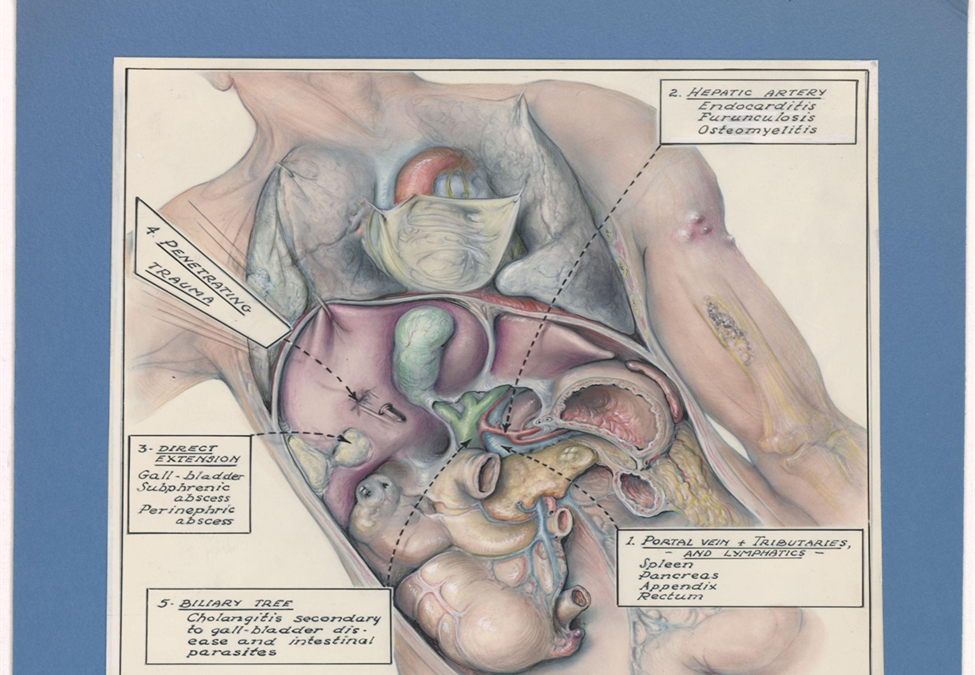
Penetrating trauma surgery
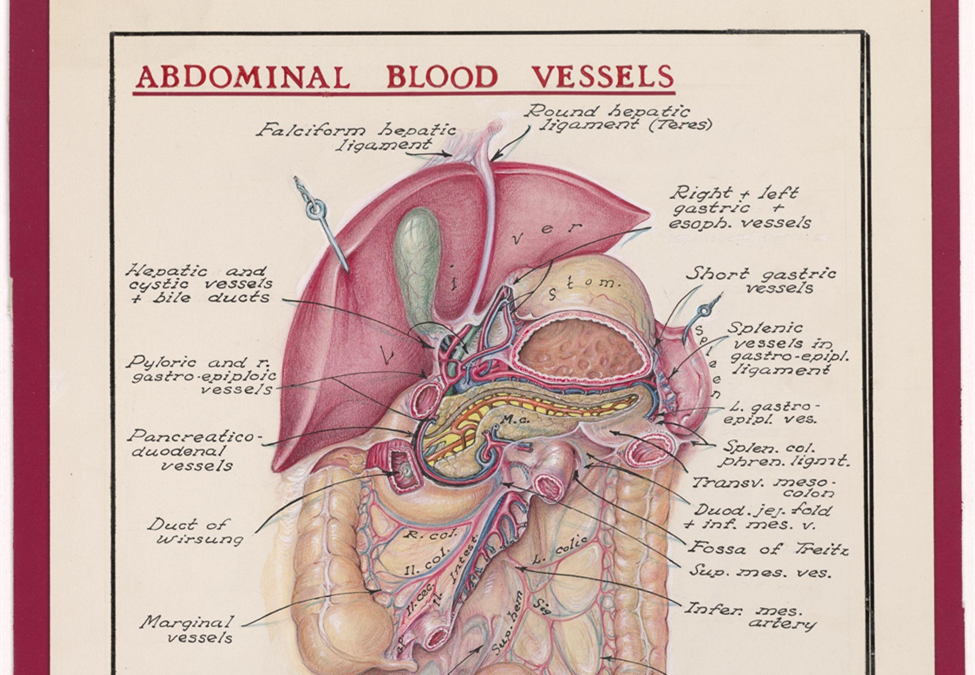
Abdominal Blood Vessels
The Henry R. Winkler Center for the History of the Health Professions is pleased to announce online access to the archives of esteemed medical illustrator, professor and artist, Mary Maciel. Mary Maciel: Visionary in Medical Illustration on JSTOR. Maciel’s career at the University of Cincinnati College of Medicine, began in 1930 in the Department of Surgery and continued through 1972 when she retired from the School of Medical Illustration. She trained with the world renowned “father” of medical illustration, Max Broedel at Johns Hopkins University. By 1947 the University of Cincinnati Board of Directors authorized a new course in medical illustration taught by 25-year-old Mary Maciel.
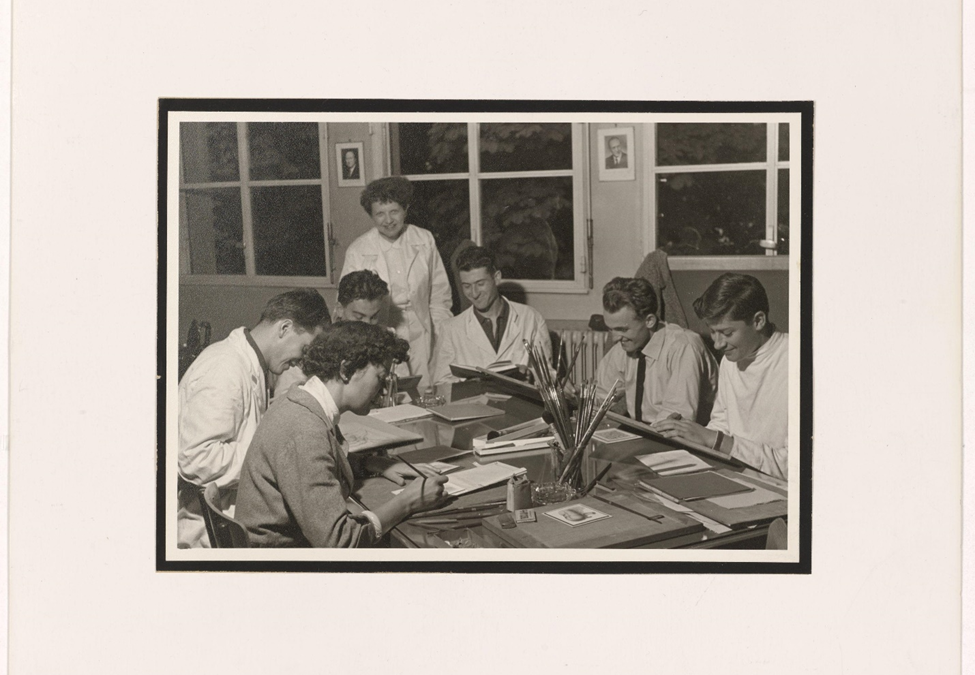
Mary Maciel Instructing Medical Illustration Students
Her artistic talent and academic administrative skills led the field world-wide. She set the standard that applicants to the UC School of Medical Illustration must possess at least four, and preferably five years of course work in general art and training in science. She only allowed the admission of a maximum of two students annually. In 1948 Maciel organized a school of medical illustration in Portugal. In 1951 she established a school of medical illustration at the University of Lyons, France. By the 1950s the University of Cincinnati School of Medical Illustration was one of four North American universities with programs in medical illustration along with Johns Hopkins University, the University of Georgia, and the University of Toronto.
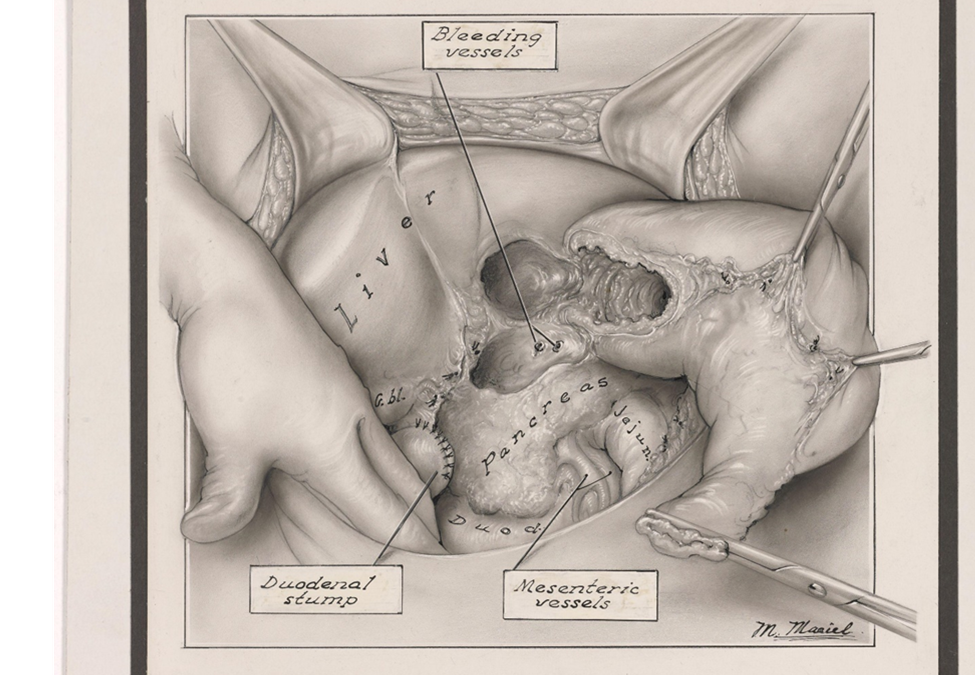
Liver Surgery
Maciel’s expertise was recognized around the globe. She often spent the summer months abroad working in the field. In 1957 she taught students of medical illustration in Finland and was awarded a four-month Fulbright professorship at the University of Strasbourg. In 1958 Mary Maciel presented lectures and medical illustration demonstrations at the University of Helsinki. She served as a consultant at medical centers in Denmark, Sweden and Norway. In 1963 Maciel visited medical schools in Brazil, Uruguay, and Argentina. She was a visiting professor at the University of Rio de Janeiro and the University of Buenos Aires. In 1968 Maciel was invited to work with the esteemed Dr. Christiaan Barnard, who performed the first human-to-human heart transplant. By the late 1960s Maciel is credited with having created more than 7,000 medical illustrations for textbooks, journals, movie animation and scientific articles.

Heart Transplant Diagram

Heart Transplant Technique
Under her leadership, the UC School of Medical Illustration made a profound impact on the field with numerous prominent graduates. Among them are George Kees in 1950 and George Schwenk in 1952. Kees became the Director of medical illustration for the Departments of Urology and Neurology at Christ Hospital, Cincinnati, Ohio. Schwenk published in medical journals, books, and popular magazines such as Life, Discover, and Esquire. In July 1972 Mary Maciel retired and subsequently, the UC School of Medical Illustration closed. On March 27, 1990, Mary Maciel, UC College of Medicine professor emerita who organized and led the College of Medicine’s School of Medical Illustration from 1947 until 1972, died at age 83.
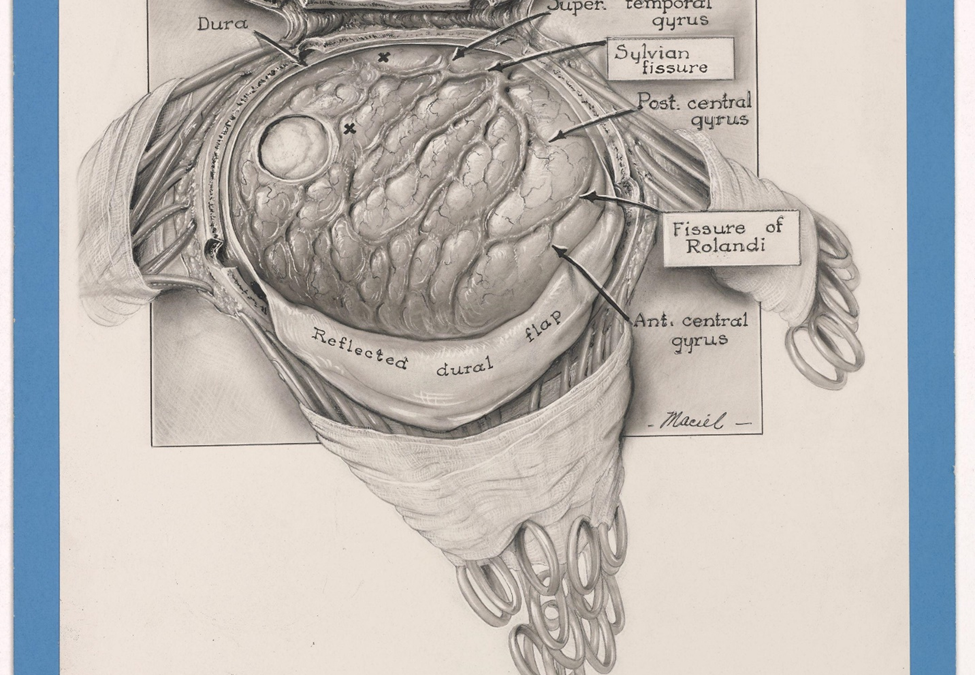
Brain Surgery
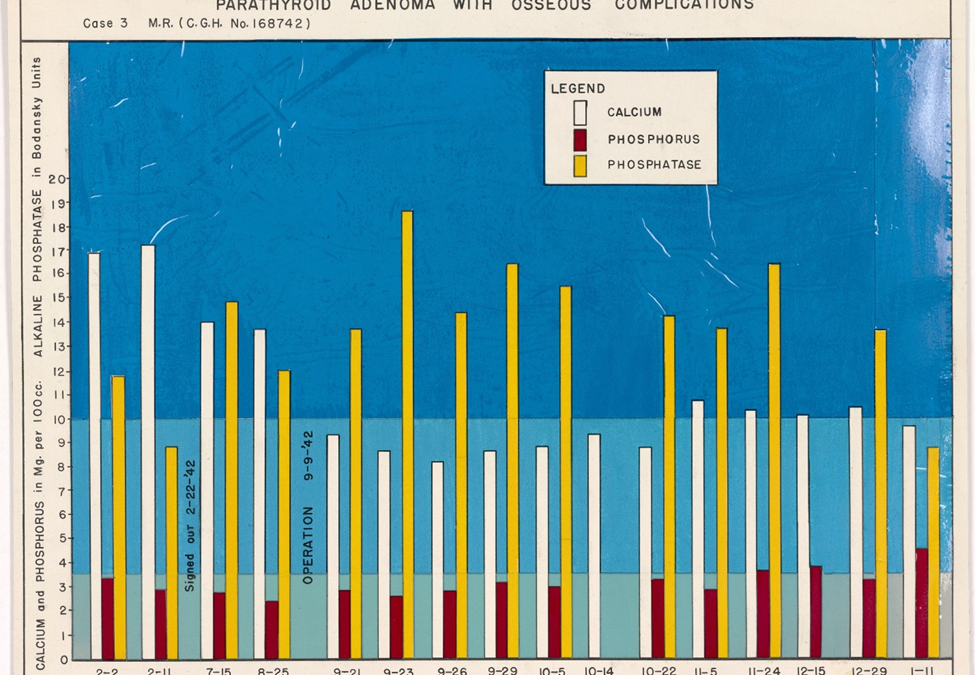
Parathyroid Adenoma Osseous
The Henry R. Winkler Center for the History of the Health Professions is grateful to James Van Mil, Sidney Gao and Sean Crowe for their expertise in the digitization of the Mary Maciel Archives.
